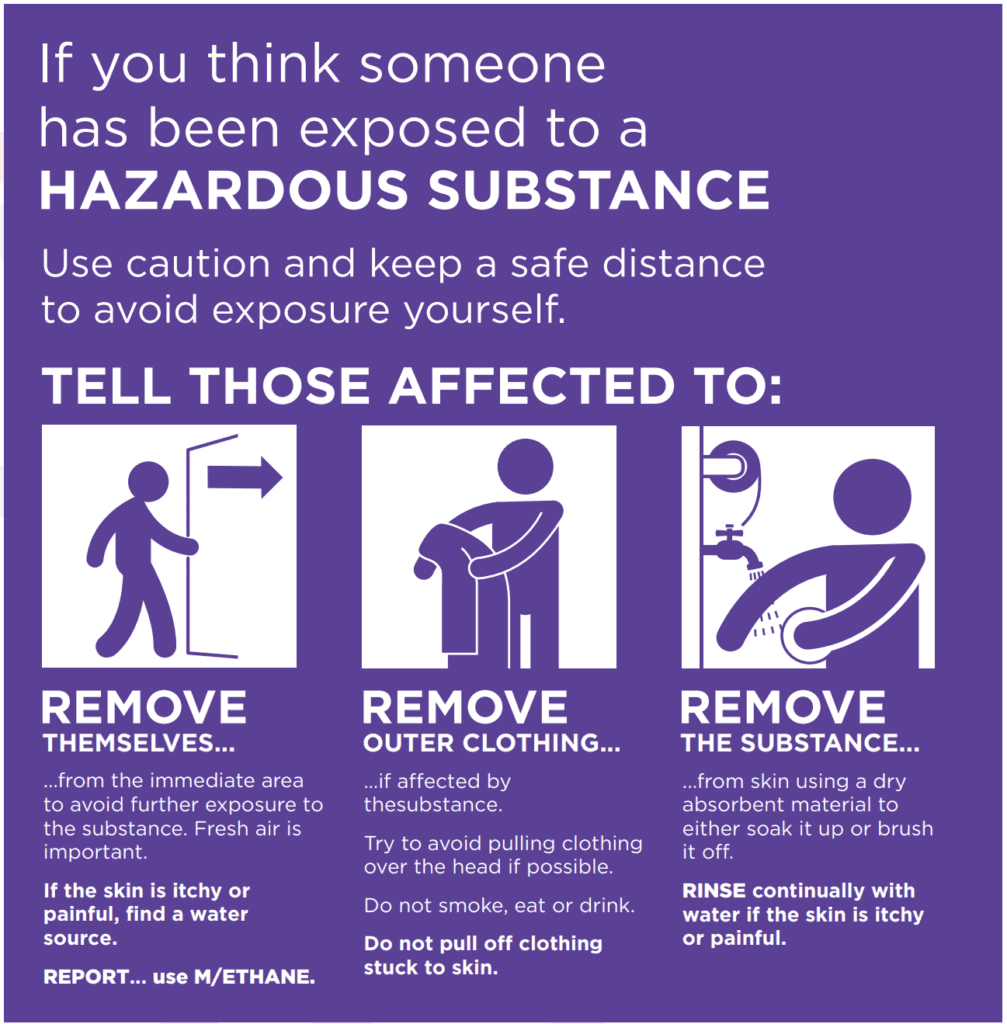Understanding the threat to life and the need for immediate action will take priority and influence any pre-determined planned responses. Members of the public in areas of either gross contamination or high concentrations of hazardous materials, and who therefore have no safe escape route, may require immediate life-saving actions.
At a hazardous materials incident, it is recognised that members of the public may be directly involved. The priority for emergency responders at all incident types is to save life; therefore the primary focus for emergency responders involved in a hazardous material incident will be to conduct initial life-saving activity for casualties that need assistance, direction or rescue.
These early operational activities should be considered an absolute priority. Any casualties who are capable of doing so should be directed away from the scene to an area that is ideally upwind and uphill of contamination and point of release. This should be done with the minimum of direct physical contact from emergency responders.
Initial operational response (IOR) identifies realistic expectations of frontline emergency responders during a response to a CBRN event. This principle can be applied to a hazardous material incident where a risk to life exists and the properties of the substance involved are not known in the early part of the response phase.
To conduct life-saving actions in a hazardous material environment it is important to understand:
- The JESIP Recognise, Assess, React process
- The REMOVE principles
- The advantages and limitations of responder personal protective equipment (PPE) and respiratory protective equipment (RPE)
- The need for multi-agency joint understanding of risk (JUR) and a dynamic risk assessment (DRA)
If unprotected responders observe incapacitated casualties for no explainable reason, they MUST NOT PROCEED any closer to avoid becoming a further casualty themselves.
However, they must consider opportunities to understand what has happened, or is still happening, and report this back to a control room.
Unprotected responders can still assist without committing themselves into a contaminated area. Using public address systems, message boards or physical actions, they can communicate appropriate advice and information following the REMOVE principles
If the incident commander is considering deploying personnel, following a risk assessment, to conduct life-saving activity, it is important to ensure an effective emergency decontamination strategy is available for personnel and casualties.
Incident commanders should undertake the joint understanding of risk (JUR), a service-specific risk assessment and apply the identified control measures effectively before committing personnel to undertake deliberate reconnaissance and rescue activities in the hot and warm zones.
The presence of saveable lives can be confirmed through the casualties being in line of sight. If casualties are not in line of sight but there is reasonable intelligence that live casualties are in the area, the incident commander may commit a deliberate reconnaissance team for a maximum of 15 minutes to provide confirmation.

